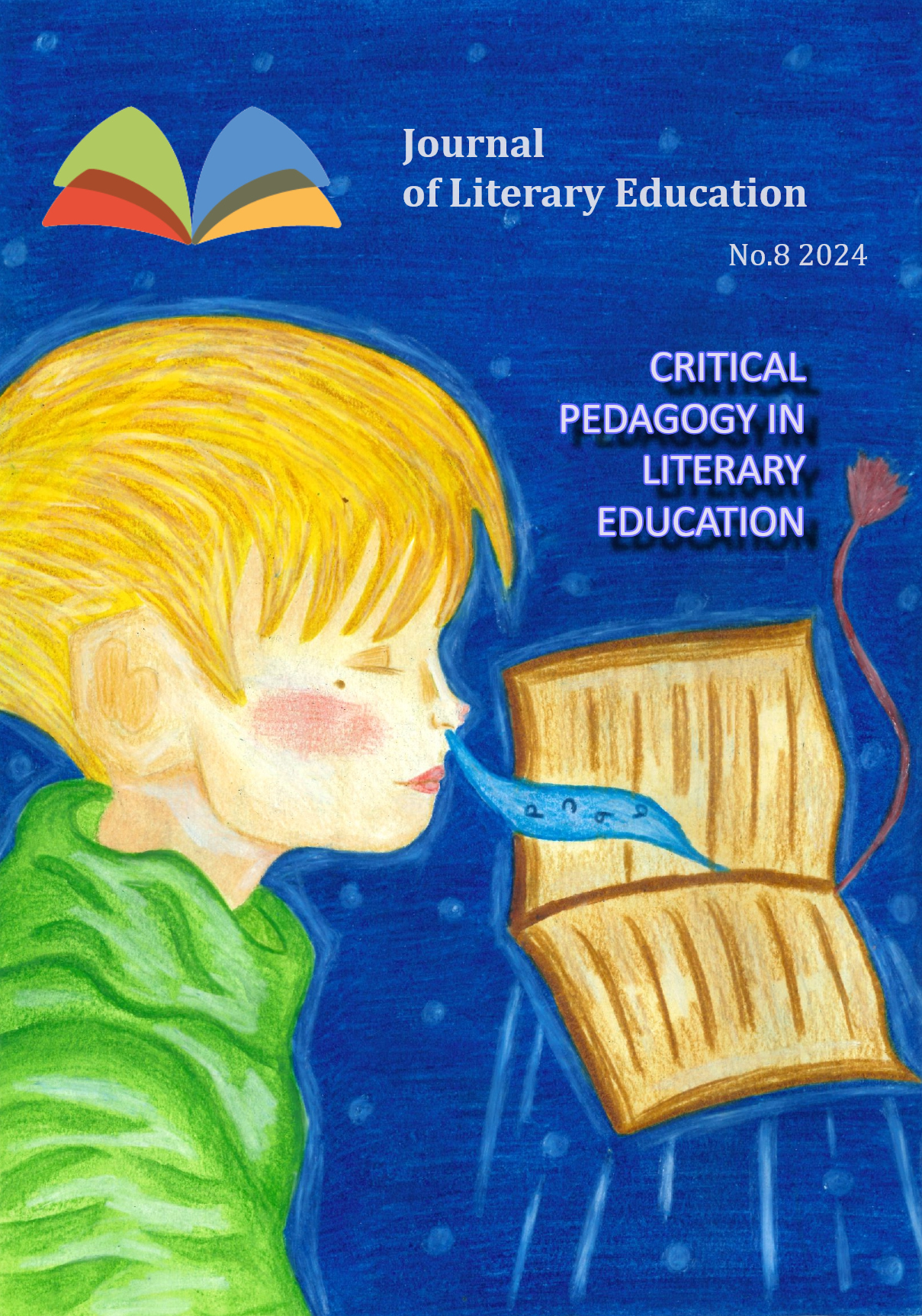Poetic manifestations of tragedy in the collection "Eleven Planets" by Maḥmoud Darwīsh
DOI:
https://doi.org/10.7203/JLE.8.28889 Abstract
Abstract
Abstract
Poetry and tragedy have frequently been seen as having different goals; poetry seeks to praise and embody beauty, whilst tragedy tends to focus more on sorrow and suffering. Nevertheless, human sorrow, love, and battle serve to restore this bond between love and battle. The human/poet who experiences the specifics of their plight in order to transform them into poetry approaches their relationship with the tragedies that shatter throughout the poem in a vivid and distinctive way. Poets differentiate between pieces of poetry, as each one carries its own tragic aspects that are either harmonic or in contradiction. As such, we shall endeavor to investigate the poetic expressions of tragedy found in Mahmoud Darwish's Eleven Planets collection by means of the spatial dimension, culminating in the poetic music. We conclude that the poet employs modern poetic devices to portray the elements of tragedy in a way that was poetic and slightly melancholic, all while fitting into the symphony of human suffering. In this collection, tragedy is an explosive cultural rhythm that leaves behind melodies of sorrow and grief. These melodies are reflected in various textual forms, beginning with the title, continuing through the spatial dimension and concluding with the poetic music.
Resumen
La poesía y la tragedia han sido frecuentemente vistas como disciplinas con objetivos diferentes: la poesía busca alabar y encarnar la belleza, mientras que la tragedia tiende a centrarse más en la tristeza y el sufrimiento. No obstante, el dolor humano, el amor y la lucha sirven para restablecer este vínculo entre amor y lucha. El humano/poeta que experimenta las especificidades de su condición para transformarlas en poesía se acerca a su relación con las tragedias que se despliegan a lo largo del poema de una manera vívida y singular. Los poetas diferencian entre piezas de poesía, ya que cada una lleva sus propios aspectos trágicos, que pueden ser armónicos o contradictorios. Así, intentaremos investigar las expresiones poéticas de la tragedia presentes en la colección Once planetas de Mahmud Darwish mediante la dimensión espacial, culminando en la música poética. Concluimos que el poeta emplea recursos poéticos modernos para representar los elementos de la tragedia de una manera poética y ligeramente melancólica, todo ello encajando en la sinfonía del sufrimiento humano. En esta colección, la tragedia se presenta como un ritmo cultural explosivo que deja tras de sí melodías de tristeza y dolor. Estas melodías se reflejan en diversas formas textuales, comenzando por el título, pasando por la dimensión espacial y culminando en la música poética.
Resum
La poesia i la tragèdia han estat sovint vistes com a disciplines amb objectius diferents: la poesia busca lloar i encarnar la bellesa, mentre que la tragèdia tendeix a centrar-se més en la tristesa i el patiment. No obstant això, el dolor humà, l'amor i la lluita serveixen per restablir aquest vincle entre amor i lluita. L'humà/poeta que experimenta les especificitats de la seua condició per a transformar-les en poesia s'acosta a la relació amb les tragèdies que es despleguen al llarg del poema de manera vívida i singular. Els poetes diferencien entre peces de poesia, ja que cadascuna porta els seus propis aspectes tràgics, que poden ser harmònics o contradictoris. Així, intentarem investigar les expressions poètiques de la tragèdia presents en la col·lecció Onze Planetes de Mahmud Darwix a través de la dimensió espacial, culminant en la música poètica. Concloem que el poeta utilitza recursos poètics moderns per representar els elements de la tragèdia de manera poètica i lleugerament malenconiosa, tot encaixant en la simfonia del patiment humà. En aquesta col·lecció, la tragèdia es presenta com un ritme cultural explosiu que deixa darrere melodies de tristesa i dol. Aquestes melodies es reflecteixen en diverses formes textuals, començant pel títol, passant per la dimensió espacial i culminant en la música poètica
 Downloads
Downloads
Downloads
Published
-
Abstract6
-
PDF5
Issue
Section
License
Copyright (c) 2025 Nawal Krine, Mouloud Kenioua, Mostapha Tobchi

This work is licensed under a Creative Commons Attribution-NonCommercial-NoDerivatives 4.0 International License.
![]()
This work is licensed under a Creative Commons Attribution-NonCommercial-NoDerivatives 4.0 International License.
Authors who publish with this journal agree to the following terms: Authors retain copyright and grant the journal right of first publication with the work simultaneously licensed under a Creative Commons Attribution License that allows others to share the work with an acknowledgement of the work's authorship and initial publication in this journal. Authors are able to enter into separate, additional contractual arrangements for the non-exclusive distribution of the journal's published version of the work (e.g., post it to an institutional repository or publish it in a book), with an acknowledgement of its initial publication in this journal. Authors are permitted and encouraged to post their work online (e.g., in institutional repositories or on their website) prior to and during the submission process, as it can lead to productive exchanges, as well as earlier and greater citation of published work (See The Effect of Open Access).



